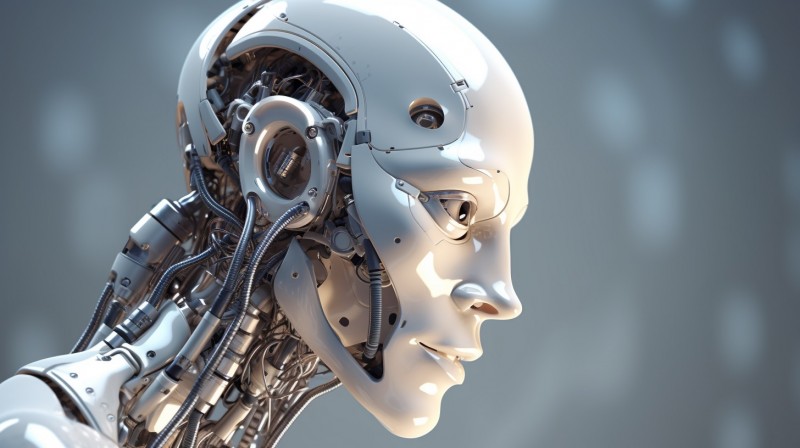
The realm of science and technology has witnessed remarkable advancements, and one of the most fascinating areas that have transformed human life is robotics. Robotics encompasses the design, construction, operation, and application of robots, which are programmable machines that can perform various tasks autonomously or semi-autonomously. This article delves into the captivating world of robotics, exploring its history, key components, applications across different fields, challenges, and the promising future it holds.
What are Robotics and its Importance?
Robotics is a multidisciplinary field that combines computer science, engineering, mathematics, and artificial intelligence to create machines that can mimic human actions and carry out tasks with precision and efficiency. The significance of robotics lies in its ability to augment human capabilities, increase productivity, and perform tasks that may be hazardous, repetitive, or beyond human capacity.
Evolution of Robotics
Early Concepts and Automatons
The origins of robotics can be traced back to ancient civilizations, where automatons and mechanical devices were created for entertainment and practical purposes. These early concepts laid the foundation for the development of more sophisticated machines in later centuries.
Emergence of Modern Robotics
The modern era of robotics began with the advent of industrialization, leading to the creation of automated machines that revolutionized manufacturing processes. As technology advanced, researchers and engineers started incorporating artificial intelligence and computer control systems, giving rise to intelligent robots capable of learning and adapting to their environments.
Key Components of Robotics
Sensors and Actuators
Sensors are the sensory organs of robots, allowing them to perceive the world around them. Actuators, on the other hand, enable robots to perform physical actions based on the information received from sensors.
Control Systems
Control systems act as the brains of robots, processing sensor data and determining the appropriate actions to be taken. These systems are often governed by complex algorithms and artificial intelligence.
Power Sources
Power sources, such as batteries or electrical systems, provide the energy required to operate robots.
Artificial Intelligence and Machine Learning Integration
Artificial intelligence and machine learning have revolutionized robotics by enabling robots to learn from data, make decisions, and improve their performance over time.
Robotics in Industry and Manufacturing
Industrial Automation
Industrial robots have drastically transformed manufacturing processes by increasing efficiency, reducing errors, and streamlining production lines.
Collaborative Robots (Cobots)
Collaborative robots work alongside humans, enhancing human-robot cooperation and optimizing productivity in industries like automotive, electronics, and healthcare.
Robotics in Medicine and Healthcare
Surgical Robotics
Surgical robots have revolutionized the field of medicine, allowing for minimally invasive procedures with greater precision and improved patient outcomes.
Assistive Devices
Robotic assistive devices, such as exoskeletons and prosthetics, have provided enhanced mobility and independence to individuals with physical impairments.
Robotics in Exploration and Research
Space Exploration
Robots have played a crucial role in space exploration, conducting experiments, gathering data, and even assisting astronauts in extraterrestrial environments.
Underwater Robotics
Underwater robots enable researchers to explore the depths of oceans and gather valuable data for environmental studies and marine research.
Robotics in Everyday Life
Domestic Robots
Domestic robots, like robotic vacuum cleaners and smart home assistants, have become increasingly popular, simplifying household chores and enhancing convenience.
Entertainment Robots
Robots in the entertainment industry, such as humanoid robots and robotic pets, offer companionship and amusement to individuals of all ages.
Challenges and Ethical Considerations in Robotics
Job Displacement and Employment Concerns
The automation of certain tasks may lead to job displacement, necessitating a proactive approach to address potential employment challenges.
Data Privacy and Security
Robots, especially those integrated with AI, collect and process vast amounts of data, raising concerns about data privacy and security.
Human-Robot Interaction
As robots become more prevalent, ensuring smooth and safe interactions between humans and robots becomes imperative.
Ethical Use of AI in Robotics
The ethical use of AI in robotics demands careful consideration to prevent biases, discrimination, and misuse of technology.
Future Prospects of Robotics
The future of robotics holds immense promise. Advancements in AI, materials science, and robotics engineering are likely to result in even more sophisticated robots capable of assisting humans in diverse tasks, from healthcare and disaster response to space exploration and beyond. Robotics has emerged as a transformative field, significantly impacting various aspects of human life. The fusion of science and technology has given birth to innovative robots that revolutionize industries, improve healthcare, explore the unknown, and enhance daily living. As we continue to push the boundaries of technological innovation, it is essential to prioritize ethical considerations and ensure that robotics remains a force for good, benefiting humanity as a whole.
AOC Streamer Going crazy on Twitch this Saturday Evening
Finding Common Ground: Promoting Dialogue in Competing Factions
Education as a Pathway to Conflict Reduction and Understanding